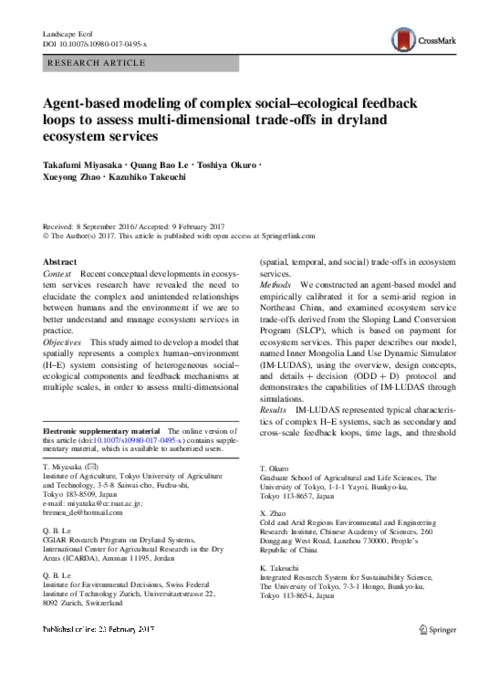Resource information
Context: Recent conceptual developments in ecosystem services research have revealed the need to elucidate the complex and unintended relationships between humans and the environment if we are to better understand and manage ecosystem services in practice.
Objectives: This study aimed to develop a model that spatially represents a complex human–environment (H–E) system consisting of heterogeneous social–ecological components and feedback mechanisms at multiple scales, in order to assess multi-dimensional (spatial, temporal, and social) trade-offs in ecosystem services.
Methods: We constructed an agent-based model and empirically calibrated it for a semi-arid region in Northeast China, and examined ecosystem service trade-offs derived from the Sloping Land Conversion Program (SLCP), which is based on payment for ecosystem services. This paper describes our model, named Inner Mongolia Land Use Dynamic Simulator (IM-LUDAS), using the Overview, Design concepts, and Details and Decision (ODD+D) protocol and demonstrates the capabilities of IM-LUDAS through simulations.
Results: IM-LUDAS represented typical characteristics of complex H–E systems, such as secondary and cross-scale feedback loops, time lags, and threshold



